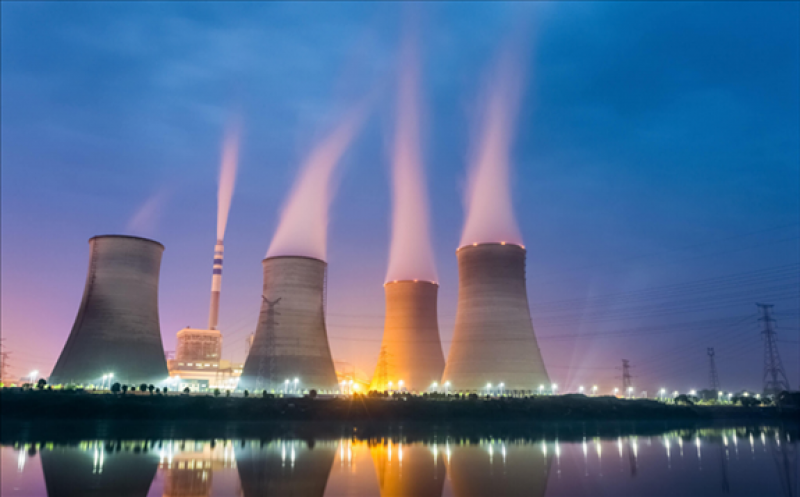With the breakthrough of hydrogen technology in various decarbonisation strategies across the world, nuclear reactors could be given a new lease of life by providing almost perfect conditions to produce green hydrogen on a massive scale.

It is not often you find two products that, ethically, are at opposite ends of the spectrum but complement each other so significantly. The reputational facelift that nuclear power has needed since it was first introduced in the last century could be realised with the introduction of technologies that utilise by-products of nuclear power to generate alternative fuel sources such as hydrogen.
T2M Global, technology partner of Aberdeen International, and owner of the groundbreaking clean energy technology AES, has recognised the untapped potential that nuclear energy could provide in reducing carbon footprints across the globe.
These thoughts have been echoed by Pinakin Patel, President of T2M Global, who told H2 View, “The recovery of hydrogen from wasted heat or surplus electricity production can enable a clean fuel by-product that has an energy decarbonisation impact that extends across the economy more broadly than the direct nuclear power distributed across the grid.
“Technology such as AES can support the nuclear industry to increase both the efficiency and economic profile of nuclear power production.”
AES stands for advance electrolyser system and recovers hydrogen from currently wasted or underutilised resources at power plants and hydrogen processing plants.
“The technology has the potential to optimise the use of an excess or shortfall of electricity during peak or off-peak hours,” Patel said, speaking on the potential that the upcoming AES-100 technology has.
AES-100 refers to a modular production unit that is currently in development and could be capable of producing 100kg/day in hydrogen. Patel revealed that “The advantage of the modularity is to create a system that can be ‘right-sized’ to a variety of different production sizes and processes to optimally extract hydrogen across a broad range of use-cases.”
Perhaps the most compelling case for its potential in creating hydrogen is the consistent stream of energy nuclear power provides as opposed to the intermittent source that solar and wind power offers.
Patel argued, “Nuclear power plants are beholden to follow established supply/demand variations in the grid. However, when they try to follow the load and demand variations, they suffer from reduced life and frequent unplanned maintenance due to the thermal stresses on high temperature components.”
Nuclear plants often become stuck with stranded energy and heat in the course of trying to moderate for ‘just-in-time’ energy production, and in most cases these by-products are often wasted. There is therefore a huge opportunity for affordable, long-duration energy storage using hydrogen.
“Our AES technology is a perfect candidate to fill this demand and render nuclear plants with both load-following capability and the creation of new revenue streams to meet global decarbonisation targets,” added Patel.
Because of this, it’s hard to argue with Patel’s view of nuclear energy being an essential low-carbon pathway to enabling Paris-consistent climate targets. Patel explained, “The recovery of hydrogen from the wasted heat or surplus electricity production can enable a clean fuel product that can be distributed across the economy more broadly than direct nuclear power.”
In fact, several global companies have also recognised the potential that nuclear power has in realising decarbonisation strategies with big players such as EDF Energy and Rosatom recently stating their intention to research and develop viable options to create hydrogen on an industrial scale.
When asked if nuclear plants have an important role to play in hydrogen production, Patel simply replies with “absolutely”, showcasing his confidence at the prospect nuclear power has in future hydrogen production.
Patel highlights that the energy sector is the single largest contributor to greenhouse gas emissions however nuclear power offers a low-carbon alternative.
“Improving the load- following capabilities, (which means that energy output varies with demand) of nuclear plants is a huge opportunity to support the proliferation of renewable grid power, which is what is required to enable a low-carbon hydrogen economy at-scale,” he said.
This leads to the prominent question of how this new technology, and nuclear power, can have an impact on the global hydrogen market should the AES-100 research be proven successful.
“Price is a function of supply and demand; any infrastructure or technology that improves the supply of renewable electricity should serve to improve renewable power costs. This, in turn, will drive an improved hydrogen cost structure that improves the attractiveness of hydrogen as a ubiquitous energy source,” Patel said, highlighting the potential to accelerate hydrogen adoption with lower costs.
“Nuclear power plants can be a critical driver of more abundant clean power and the lower hydrogen production costs that will ultimately accelerate the adoption of hydrogen as a clean fuel to sustainably power a growing global economy.”